Mendelian inheritance, also known as Mendelism or Mendelian genetics, is a set of principles that explain how hereditary traits are passed from parents to their offspring.
These principles were initially developed by Gregor Johann Mendel, an Austrian monk, and botanist, who is regarded as the father of genetics. Mendel conducted pioneering experiments with garden peas (Pisum sativum) in the 19th century and established the fundamental laws of inheritance.
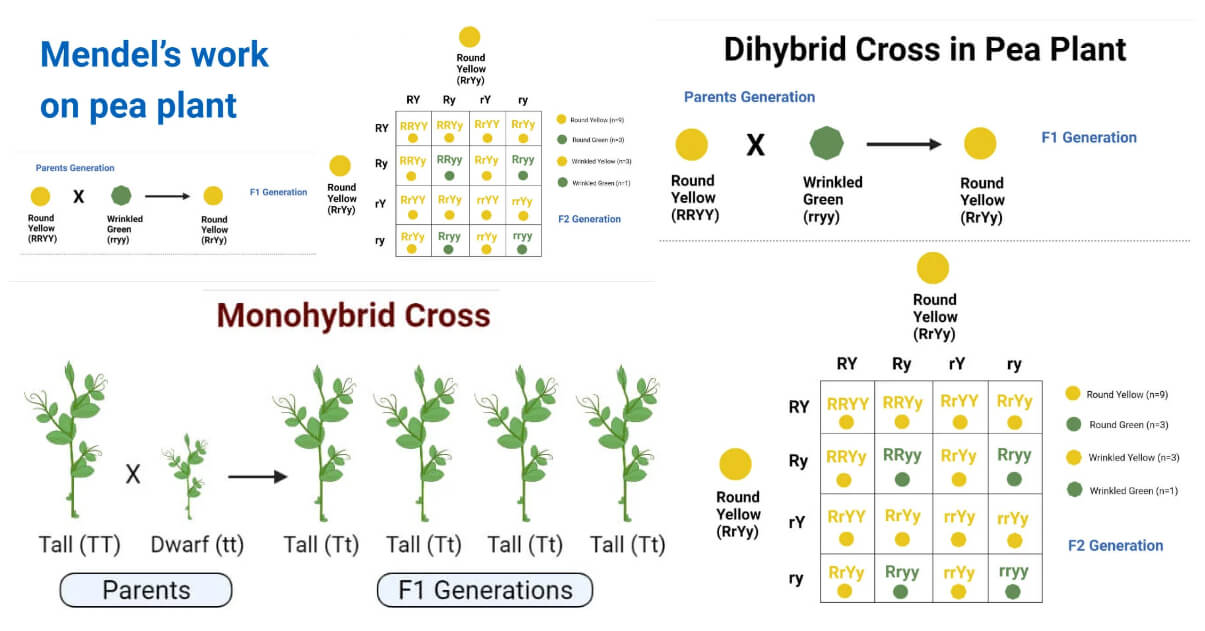
Mendel’s contributions to the field of genetics were initially overlooked but were rediscovered and recognized in the early 20th century. Despite facing initial controversy, Mendel’s work laid the foundation for classical genetics and has since provided a framework for understanding the basic principles of heredity.
Interesting Science Videos
Mendel’s Experiment
Gregor Mendel conducted breeding experiments on the pea plant between 1856 and 1863 in order to study the patterns of inheritance. He specifically chose pea plants for a number of reasons including their availability in various varieties, self-pollination capabilities, short life cycles, ease of cultivation, and distinct characteristics. Mendel focused on studying seven specific traits in pea plants: seed shape, seed color, flower color, pod shape, pod color, flower position, and stem height.
Mendel conducted two main experiments, monohybrid and dihybrid crosses, to determine the laws of inheritance.
Monohybrid cross
- In the monohybrid cross, Mendel studied the inheritance of a single trait. Mendel conducted crosses between pea plants with different traits of the same character, such as tallness (TT) and dwarfness (tt), and observed their inheritance patterns.
- The parental generation (P) are the organisms involved in the initial cross, while the first filial generation (F1) represents the offspring of this cross.
- In the F1 generation, all the plants showed the dominant trait (tallness), while the recessive trait (dwarfness) was not present. This pattern of displaying only the dominant trait in the F1 generation was the same across all the traits Mendel studied.
- When the F1 plants were crossed among themselves, resulting in the second filial generation (F2), some offspring showed the recessive trait, which was not observed in the F1 generation. F2 generation exhibited a 3:1 ratio of the dominant and recessive traits.
- Mendel observed and found that this pattern was consistent in all the traits he studied.
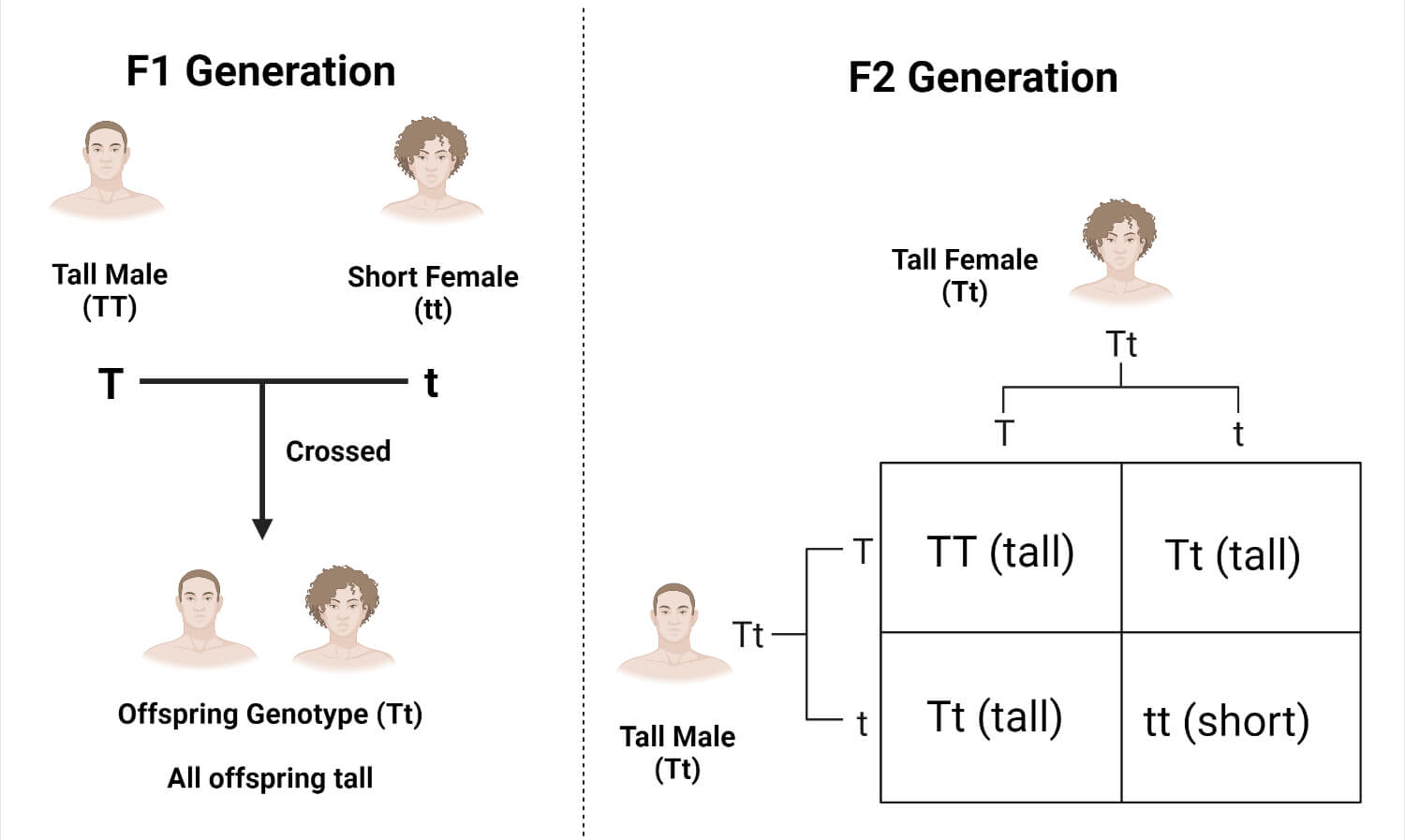
Dihybrid cross
- In the dihybrid cross, Mendel studied the inheritance of two different traits. He crossed purebred parental plants with different traits. For example- plants with yellow, round seeds (YYRR) were crossed with plants with green, wrinkled seeds (yyrr).
- The resulting F1 generation displayed only the dominant traits of yellow and round seeds. In the F2 generation, both parental traits appeared in four types of combination in a phenotypic ratio of approximately 9:3:3:1, showing the independent assortment of the two traits.
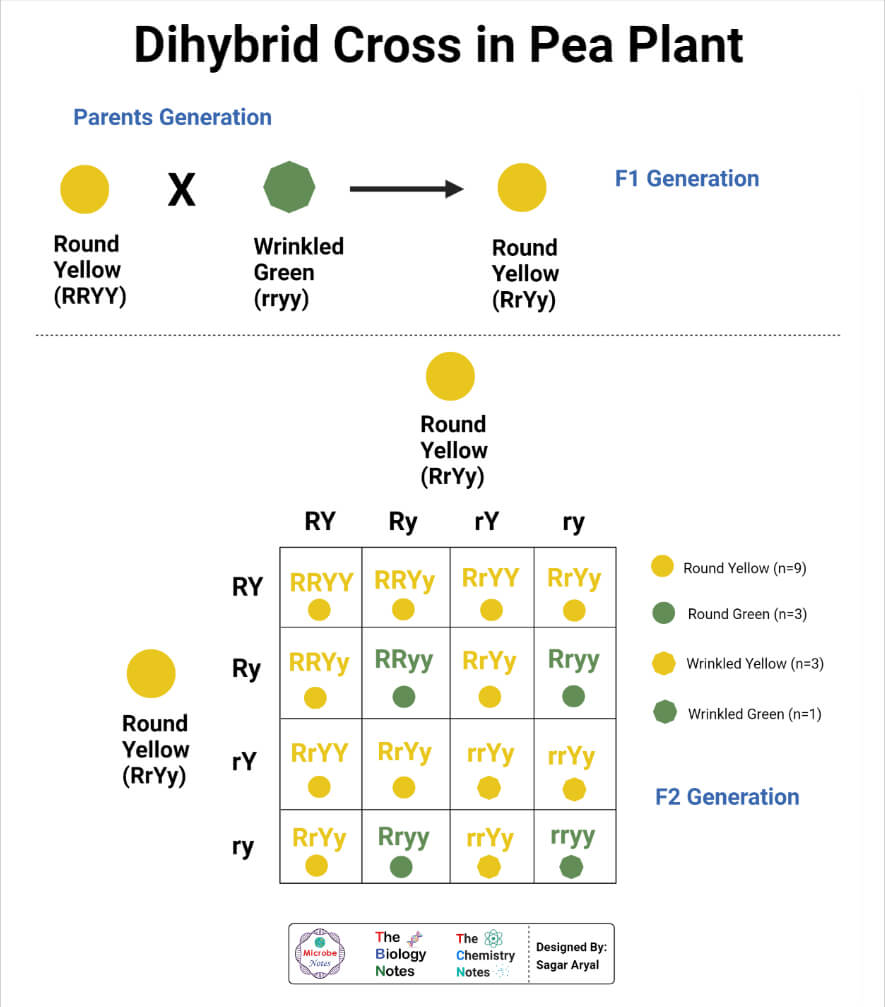
Mendel’s Laws of Inheritance
Mendel proposed three laws explaining the inheritance of traits.
Law of Dominance
According to the law of dominance, when there are two alternative forms (alleles) of a particular trait present in an organism, one allele will be dominant and the other recessive. In the F1 generation, only the dominant allele is expressed, while the recessive allele remains masked or unexpressed. This law explains how the traits of the parents are expressed in the offspring during a monohybrid cross.
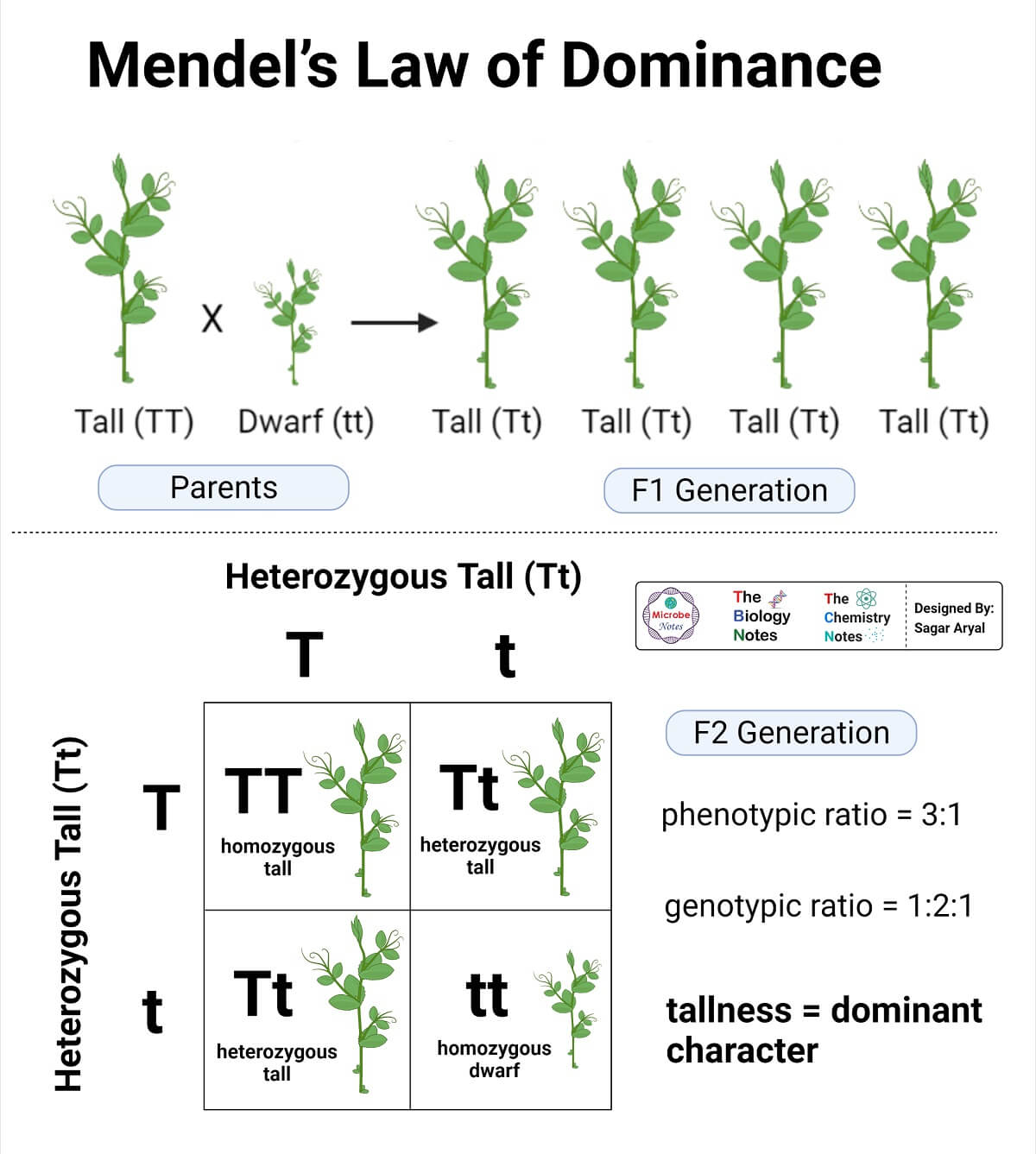
Law of Segregation
The Law of Segregation, also known as the Law of Purity of Gametes, explains how the alleles responsible for a specific trait separate during the formation of gametes and how they are passed on to the offspring. According to this law, each individual possesses two alleles for a particular trait, one inherited from each parent. During gamete formation, these alleles separate from each other, so that each gamete carries only one allele for each trait. Since each gamete carries only one allele for a trait, they are considered pure or homozygous for that particular characteristic.
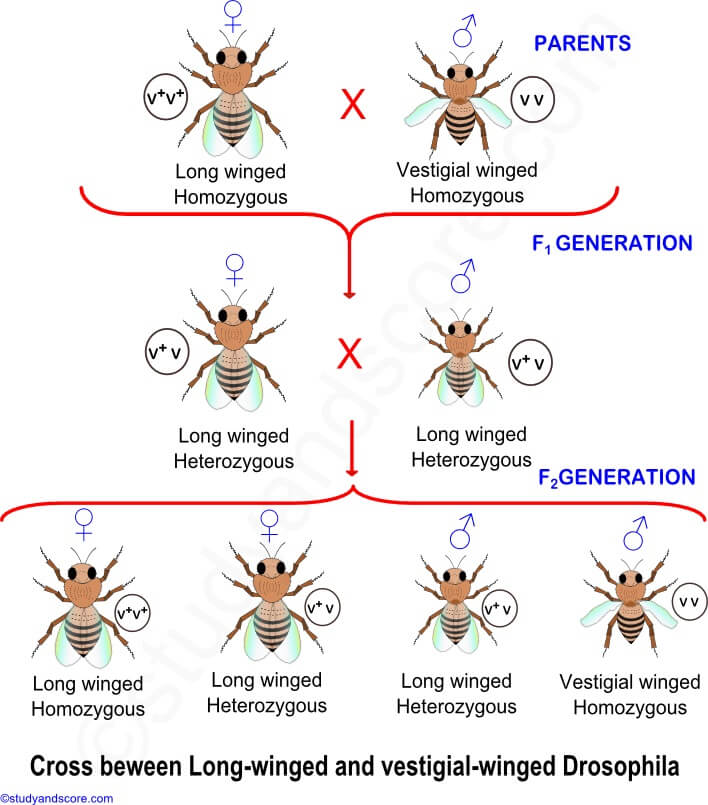
Law of Independent Assortment
According to the Law of Independent Assortment, alleles for different traits separate and are inherited independently during the formation of gametes. This means that the alleles for one trait are not linked or influenced by the alleles for other traits. Mendel’s dihybrid cross provides support for the Law of Independent Assortment.
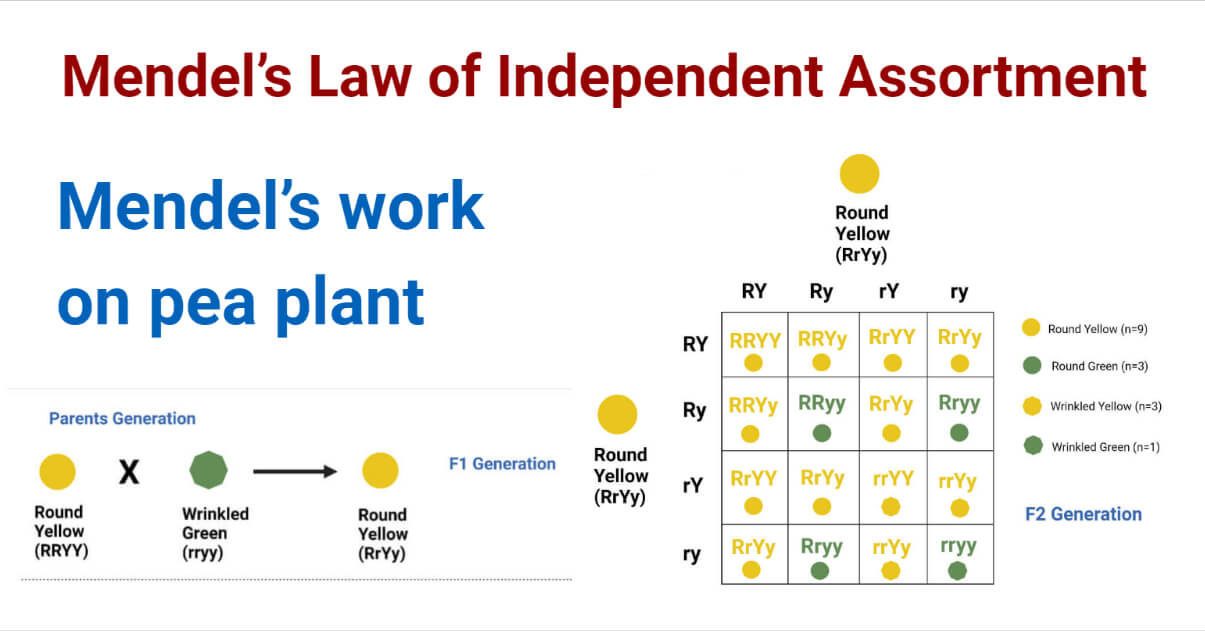
Modes of Inheritance
Mendelian inheritance patterns can be categorized into three major types: autosomal dominant, autosomal recessive, and X-linked inheritance.
Autosomal Dominant Inheritance is a type of inheritance where the presence of a single dominant allele is sufficient to express a trait or disease, even if the other chromosome carries a normal allele. This means that an affected individual only needs to inherit one copy of the dominant allele from either parent to exhibit the trait or disease. An affected individual has a 50% chance of passing the trait to each independent offspring. Examples of autosomal dominant diseases are Huntington’s disease and Marfan syndrome.
Autosomal Recessive Inheritance is the mode of genetic inheritance where the expression of a trait or disease requires the presence of two copies of an abnormal recessive allele, one inherited from each parent. In this inheritance pattern, both alleles must be abnormal for the trait to be expressed. Carriers of a single copy of the recessive allele do not display the trait but can pass it on to their children. Couples who are carriers have a 25% risk of having an affected child. Examples of autosomal recessive diseases are cystic fibrosis and sickle cell anemia.
X-Linked Inheritance refers to the inheritance of traits or diseases associated with genes located on the X chromosome. Since males have one X and one Y chromosome, they typically exhibit the phenotype of X-linked traits inherited from their mother, as they only inherit one X chromosome. On the other hand, females have two X chromosomes, so they may be carriers of X-linked traits without displaying the phenotype. Examples of X-linked diseases are hemophilia and color blindness.
Deviation from Mendel’s Findings
Mendel’s principles laid the foundation for genetics. However, exceptions and variations in Mendel’s findings have been discovered that have helped us develop a more complete understanding of inheritance patterns. Some of these variations are:
Incomplete Dominance occurs when the offspring’s phenotype is not the same as either of the parents but is intermediate between the phenotypes of the parents. It happens when one allele for a trait is not completely dominant over the other, resulting in a combination of the phenotypes of both alleles. This goes against Mendel’s law of dominance, which states that one allele is dominant and masks the expression of the other. For example, in the snapdragon flower, crossing plants with red and white flowers resulted in pink flowers.
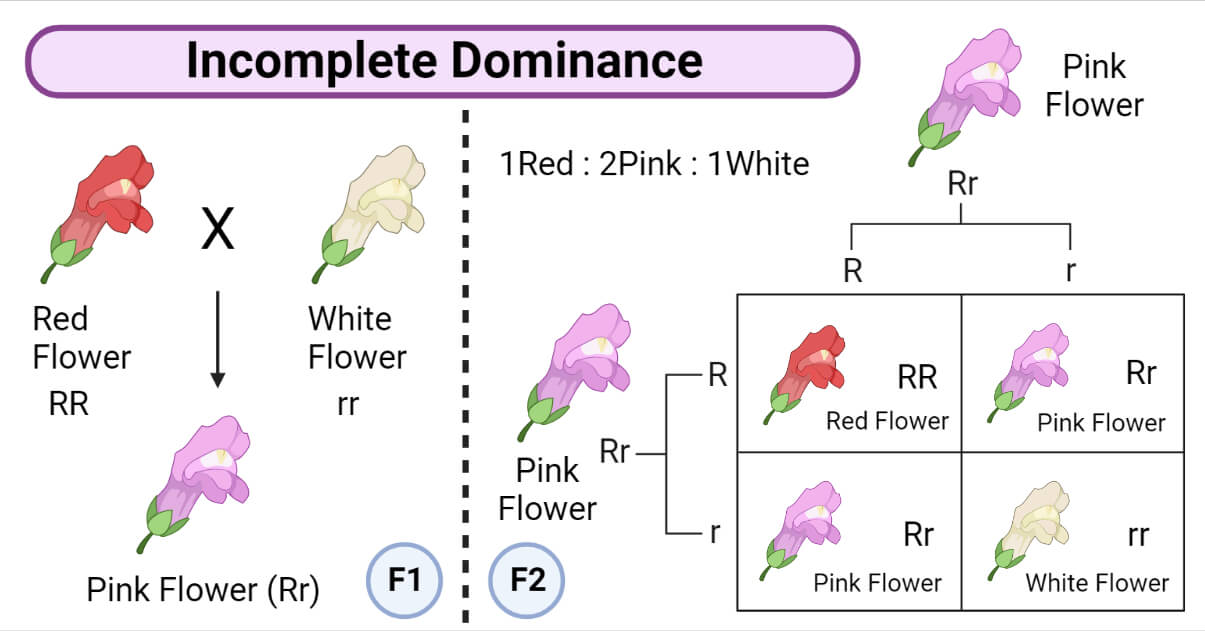
Co-dominance occurs when both alleles in an organism are fully expressed. This means that neither allele dominates over the other, and both traits are simultaneously present in the phenotype. This also differs from Mendel’s law of dominance, where one allele dominates over the other. An example is blood type inheritance, where the A and B alleles are co-dominant, resulting in individuals with both A and B antigens.
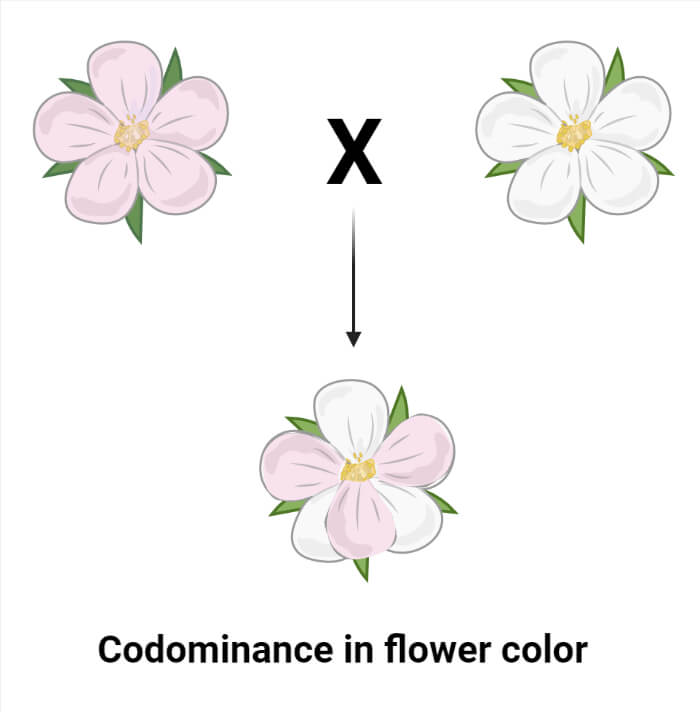
Multiple Alleles refer to a gene having more than two variations or alleles within a population. Unlike Mendel’s experiments that involved traits controlled by only two alleles, some traits can have multiple alleles. For example, the ABO blood group system has three alleles: A, B, and O.
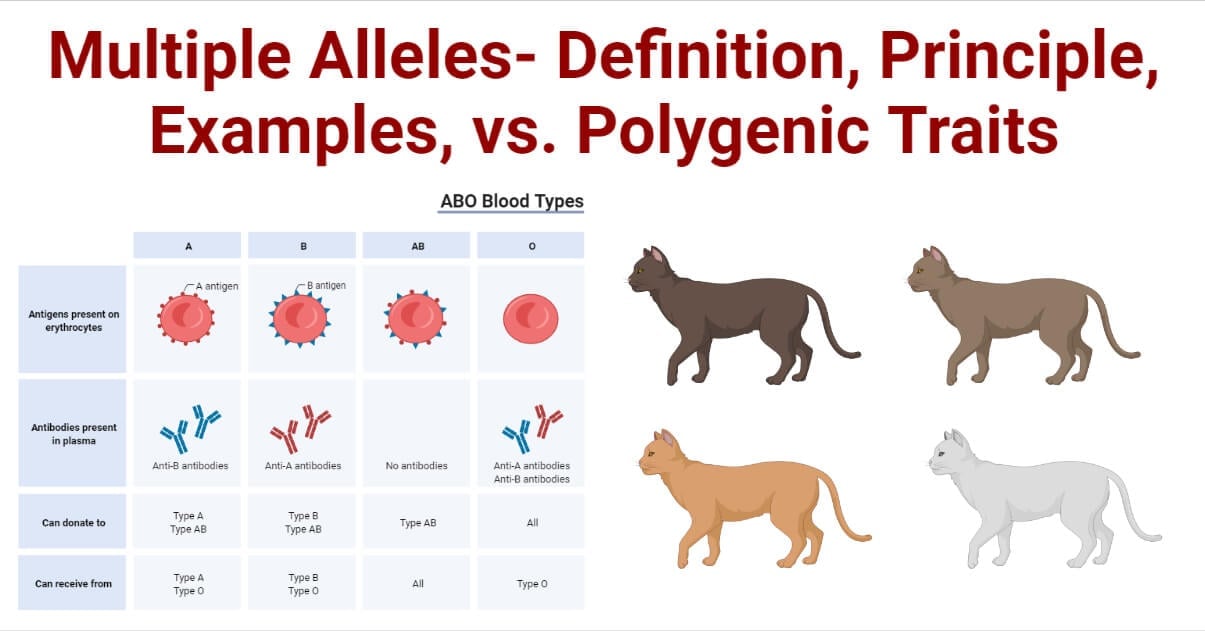
Genetic linkage refers to the phenomenon where genes located near each other on the same chromosome have a tendency to be inherited together. This is against the principle of independent assortment, which states that genes segregate and inherit independently.
Epistasis occurs when the expression of one gene masks or affects the expression of another gene. Epistasis deviates from Mendel’s laws as it involves the interaction of multiple genes and shows that the expression of one gene can modify the expression of another gene.\
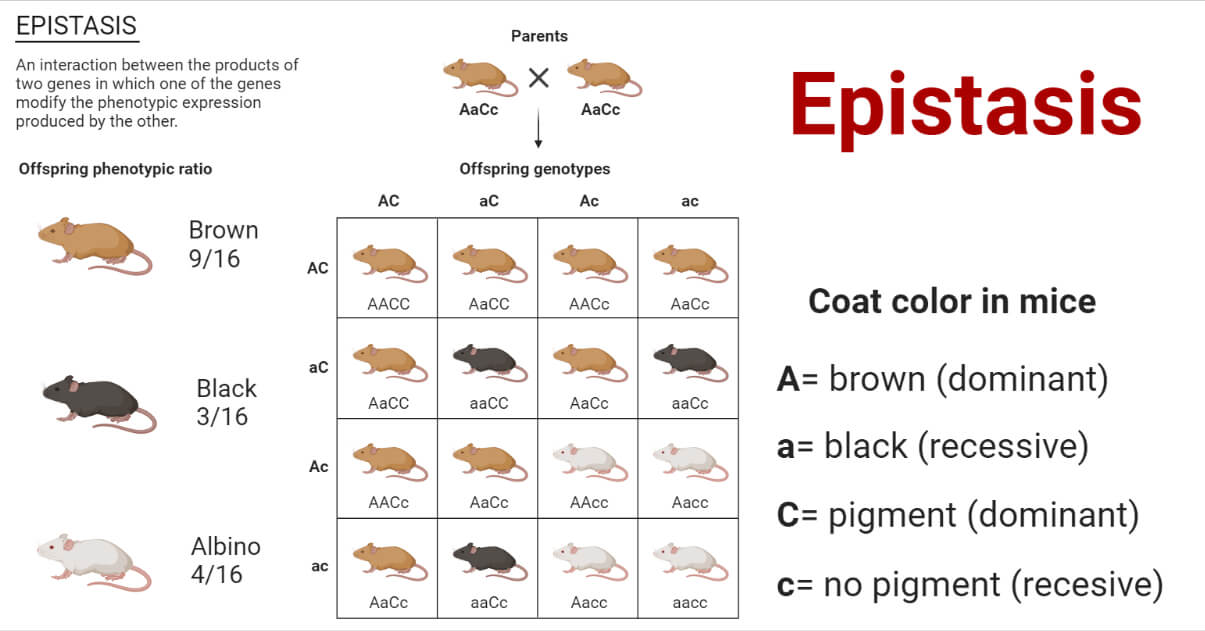
References
- Gautam, A. (2018). Mendel’s Laws. Encyclopedia of Animal Cognition and Behavior, 1–3. doi:10.1007/978-3-319-47829-6_2054-1
- Griffiths, A. J. F., Miller, J. H., Suzuki, D. T., Lewontin, R. C., and Gelbart, W. M. (2000). Mendel’s experiments. In An introduction to genetic analysis (7th ed.). New York, NY: W. H. Freeman.
- Harel, T., Pehlivan, D., Caskey, C. T., & Lupski, J. R. (2015). Mendelian, Non-Mendelian, Multigenic Inheritance, and Epigenetics. Rosenberg’s Molecular and Genetic Basis of Neurological and Psychiatric Disease, 3–27. doi:10.1016/b978-0-12-410529-4.00001-2
- https://humanbiology.pressbooks.tru.ca/chapter/5-12-mendelian-inheritance/
- https://openstax.org/books/biology/pages/12-introduction
- https://opentextbc.ca/biology/chapter/8-2-laws-of-inheritance/
- https://www.genome.gov/genetics-glossary/Mendelian-Inheritance
- https://www.khanacademy.org/science/ap-biology/heredity/non-mendelian-genetics/a/variations-on-mendels-laws-overview
- https://www.ncbi.nlm.nih.gov/books/NBK132145/
- https://www.ncbi.nlm.nih.gov/books/NBK557512/
- Stenseth NC, Andersson L, Hoekstra HE. 2022. Gregor Johann Mendel and the development of modern evolutionary biology. Proceedings of the National Academy of Sciences. 119(30): Article 119. doi:10.1073/pnas.2201327119.
